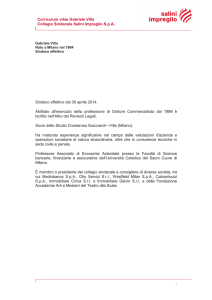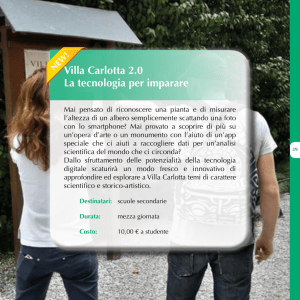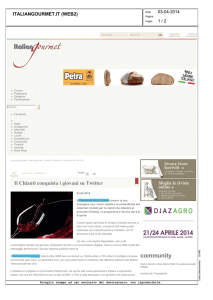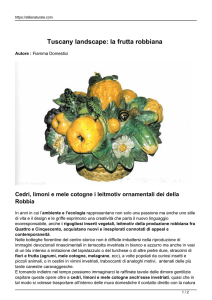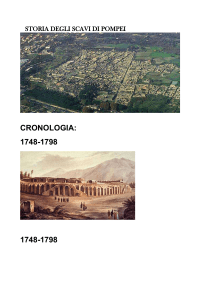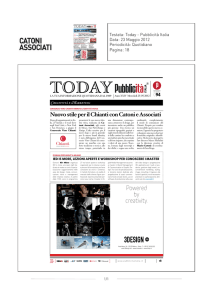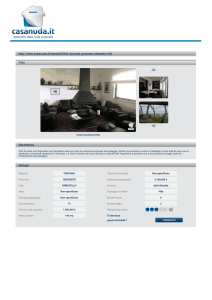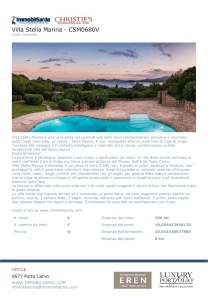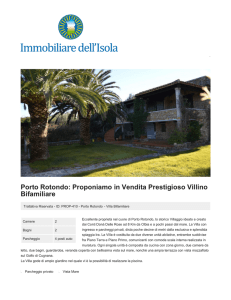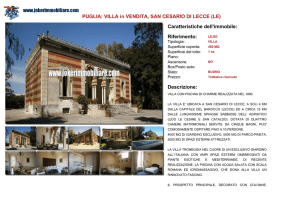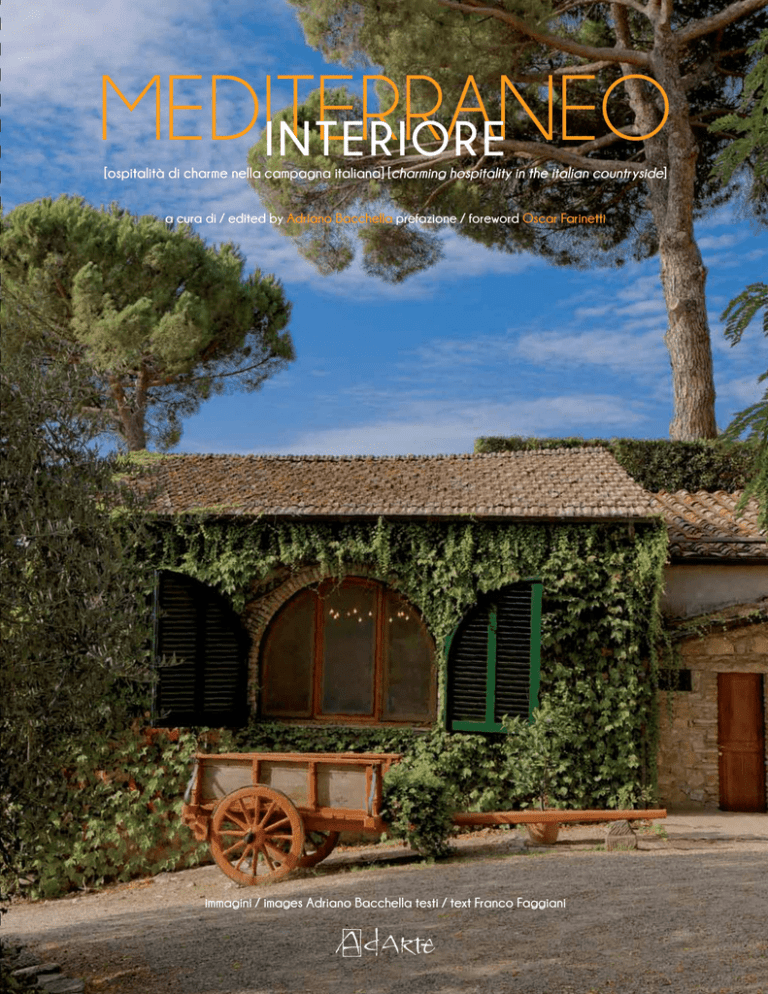
mediterraneo
INTERIORE
[ospitalità di charme nella campagna italiana] [charming hospitality in the italian countryside]
a cura di / edited by Adriano Bacchella prefazione / foreword Oscar Farinetti
immagini / images Adriano Bacchella testi / text Franco Faggiani
VILLA LE BARONE
Greve in Chianti – Firenze
«Nei grandi spazi e nelle prospettive che i cipressi segnano visibilmente anche in lontananza, ammiriamo, un po' dovunque, il regolarissimo “rigato” delle
vigne, concave qua come vasti anfiteatri, là convesse come absidi prolungate e finalmente distese»
Mario Soldati, Vino al vino
L’ospitalità non è arte a caso
Villa Le Barone, sede di una baronìa nel Medioevo,
è radicata nel cuore del Chianti più antico e al tempo stesso più
vivace, tra quelle colline vitate che sembrano quasi ondeggiare tra
Panzano e Greve in Chianti. In tempi lontani fu residenza di vacanza
della famiglia fiorentina dei Della Robbia, che tra il Quattrocento e il
Cinquecento ebbe il merito di portare l’arte della ceramica al pari di
quella della pittura e della scultura più pregiata.
Oggi è condotta da un ramo intrecciato con quello dei Della
Robbia, la famiglia De Larderel, che ha come figura predominante
l’ingegnere francese Francesco de Larderel, che nell’Ottocento mise
in opera le tecniche di estrazione dell’acido borico (Larderello, borgo
tra le pisane Colline Metallifere si chiama così in suo onore).
Circa una quarantina di anni fa la villa chiantigiana venne
trasformata in un albergo di lusso. Non perse mai la struttura,
l’ambientazione e lo spirito di una raffinata e discreta dimora di
campagna, dove la vita scorre in modo più pacato rispetto a quella
che si deve affrontare «fuori», oltre il grande parco di sei ettari che
la circonda e la protegge. In questo abbraccio verde ci sono sentieri,
terrazze panoramiche, luoghi in cui è piacevole sostare in silenzio, e
roseti sospesi sui vigneti e sulle chiome degli olivi. Anche la piscina è
all’interno di un roseto e da lì lo sguardo scivola fin sulla vicina pieve
romanica di San Leolino, che ha oltre novecento anni di storia sulle
spalle o, meglio, sulle sue tre navate. Il giardino, il parco, i roseti, il
sottobosco… è tutto un tripudio di aromi e colori. In ogni stagione,
e tutt’intorno, una campagna fertile che costituiva già sei secoli fa
elemento d’attrazione per i Della Robbia, amanti sì del bel vivere
purché questo fosse anche supportato dal buon vino e dai buoni
prodotti della terra. Oggi il granaio, la fattoria, la villa accolgono
le 28 stanze in cui gli ospiti possono trovare ogni soddisfazione al
loro benessere, al loro gusto estetico e alla loro voglia di vivere una
stagione d’altri tempi. Pavimenti in cotto e travi, mobili e componenti
d’arredo da far invidia agli antiquari più esigenti, stoffe pregiate,
arazzi, poi divani, salotti, terrazze appartate. La sera, specialmente,
il punto d’incontro è tra i tavoli della vecchia cantina, dove le cuoche
della fattoria fanno transitare prelibatezze locali alle quali è inutile
«opporre resistenza». In compagnia dei grandi Chianti del territorio,
che non hanno più bisogno di essere raccontati,
ma solo di essere assaggiati, con il palato e con lo spirito conviviale
che qui viene esaltato come fosse un’arte.
Come del resto i Della Robbia fecero con le ceramiche.
Hospitality is no accidental art
Villa Le Barone, seat of a baronetcy in medieeval times, stands at the
heart of the most ancient and at the same time most lively Chianti,
among those vine-covered, almost undulating hills between Panzano and
Greve in Chianti. In a time long past it used to be the holiday residence
of the Florentine family Della Robbia, a family that between the 15 th and
the 16 th century can be credited with bringing ceramic art on par with
painting and top-level sculpting.
Today the Villa is under the direction of a family connected to that of
the Della Robbia, the De Larderel, whose predominating figure was the
French engineer Francesco De Larderel.
He had launched the techniques for extracting boric acid in the
19 th century (Larderello, a village in the Colline Metallifere, the
metalliferous hills of Pisa, has been named in his honour).
The villa in the Chianti area has been turned into a luxury hotel about
forty years ago. It never lost its basic structure, ambience and that air
of a sophisticated and discrete country home, where life proceeds at a
more sedate pace than that one has to deal with “outside”, behind the six
hectare park surrounding and protecting it. In its green embrace lie paths,
terraces with a view, spots to enjoy the silence, and rose gardens above
vineyards and olive trees.
The pool, too, is right in the middle of a rose garden and from there the
eye roams towards nearby Romanic parish church San Leolino, with
more than 900 years of history weighing on its shoulders, or rather on its
three naves.
Garden, park, rose gardens, coppice … a feast of scent and colours.
The surrounding countryside, fertile in every season has already been
an element of attraction for the Della Robbia, six centuries ago, who
loved the good life to be sustained by good wine and tasty produce. Today
granary, farmhouse and villa house 28 rooms where guests can find
everything to satisfy their sense of wellbeing, of beauty and their desire to
live a moment out of time.
The terracotta f looring and the beams, the furnishings and accessories
would be the envy of even the most discerning antiquarian – add to this
precious fabrics, wall hangings, divans, salons and isolated terraces. In
the evening guests meet at the tables of the old cellar, where the farm’s
cooks dish out local delicacies it is useless even trying to resist
All is accompanied by the territory’s great Chianti wines, which need no
further introduction, just taste them, please your palate and do so in the
spirit of conviviality, practically elevated to an art form here. Just like the
Della Robbia have done with ceramics.
Terrazze panoramiche sospese sul paesaggio chiantigiano.
Intorno, un vasto parco privato che è un tripudio
di aromi e di colori in ogni stagione
Panorama terraces high above the landscape of Chianti.
All around a vast private park offering rich colours
and scents in every season
I mobili, gli elementi d’arredo, gli oggetti particolari,
spesso pezzi unici di raffinato artigianato,
sono in grado di fare invidia agli antiquari più esigenti
L’edificio fu abitato oltre cinque secoli fa
dalla famiglia fiorentina dei Della Robbia,
famosa per le sue ceramiche.
Oggi è dei nobili De Larderel, d’origine francese
Furnishings and embellishments, the extraordinary,
often unique pieces of sophisticated handicraft,
could be the envy of even the most discerning antiquarians
The Florentine family Della Robbia,
famous for its ceramics,
lived in this villa more than five centuries ago.
Today it belongs to the aristocratic De Larderels of French origin
Nella villa trasformata in albergo 50 anni fa,
gli ospiti possono deliziarsi con i piatti della cucina tipica chiantigiana,
con le materie prime dell’orto e la pasta fatta in casa.
In this villa turned hotel 50 years ago,
guests can rejoice in dishes typical of the Chianti region,
made with products from its very own kitchen garden, and home-made pasta
Villa le Barone
Via San Leolino, 19 - 50022 Panzano - Greve in Chianti - Firenze
tel +39 055 85 26 21 - www.villalebarone.com

